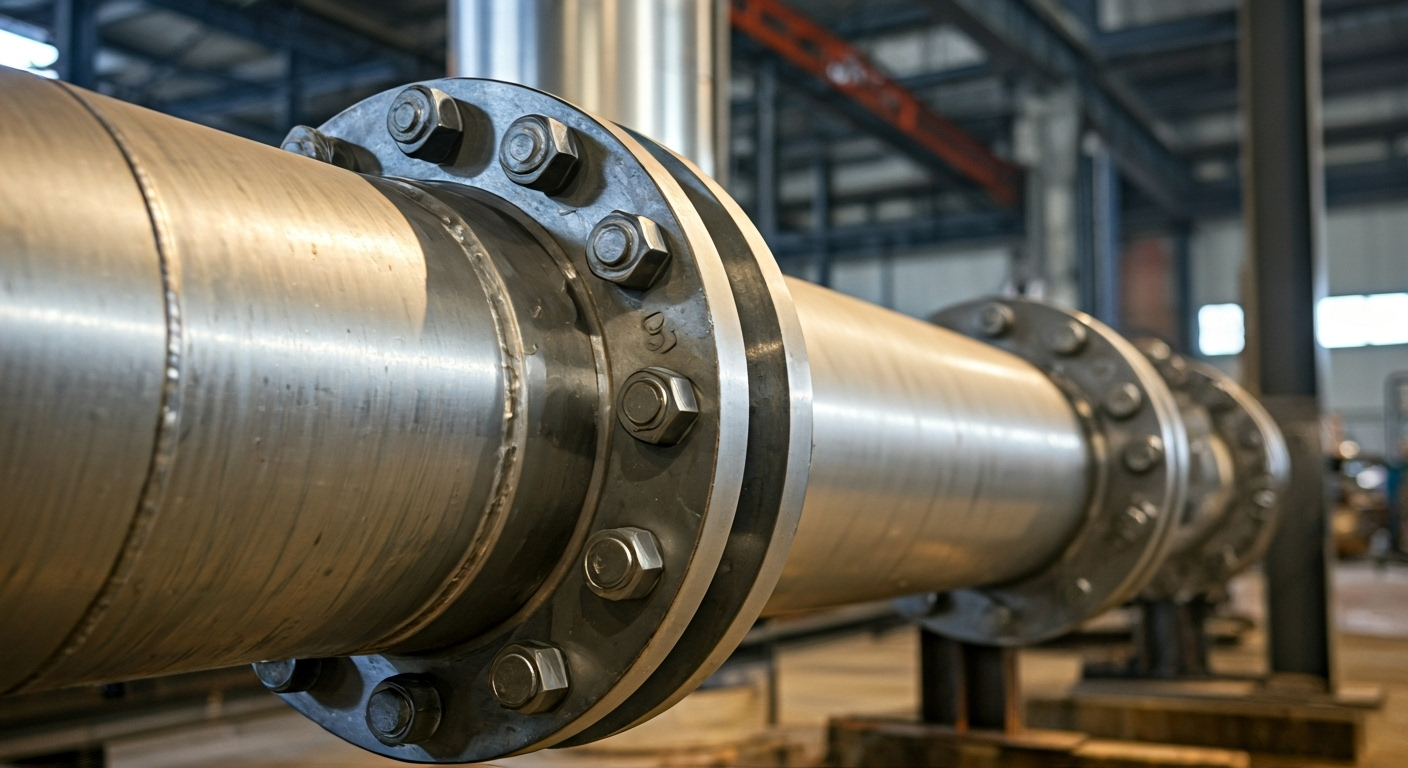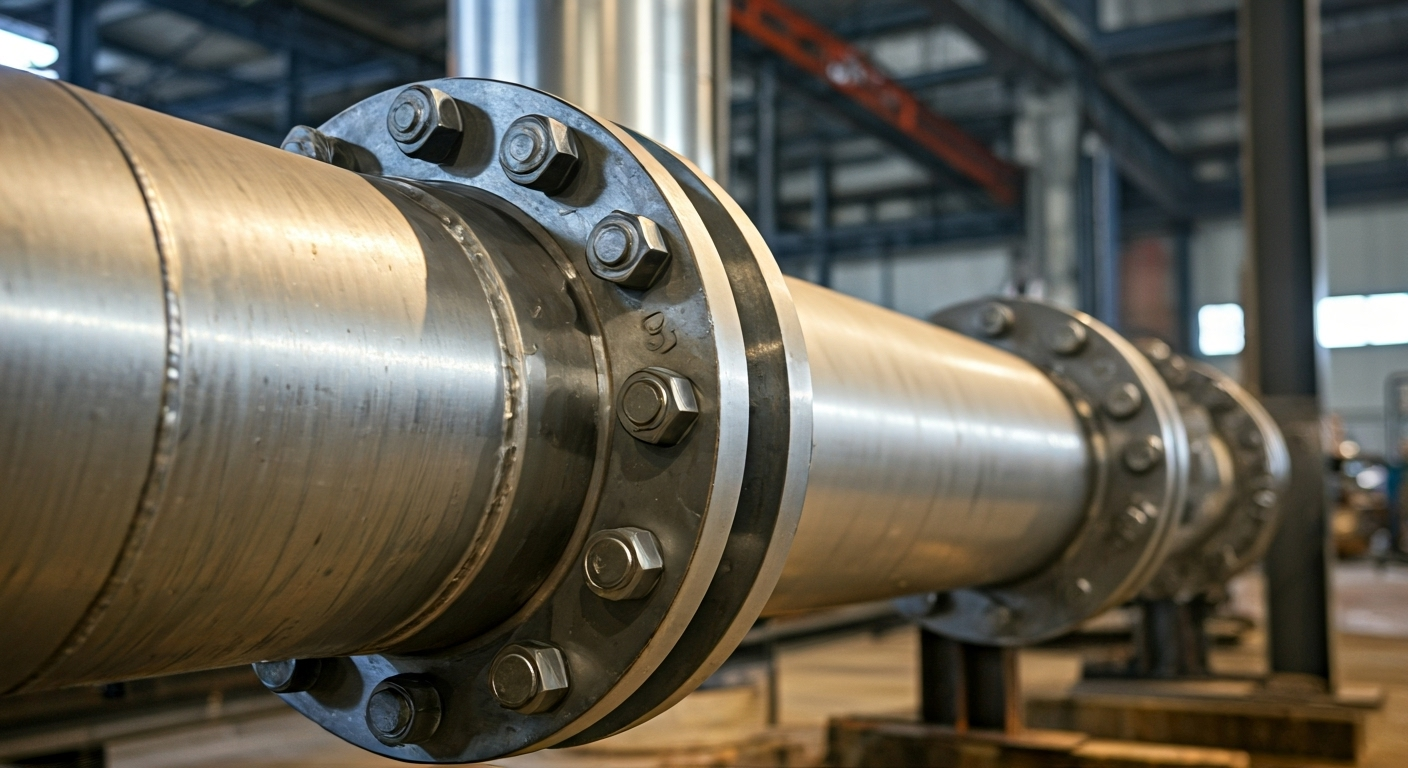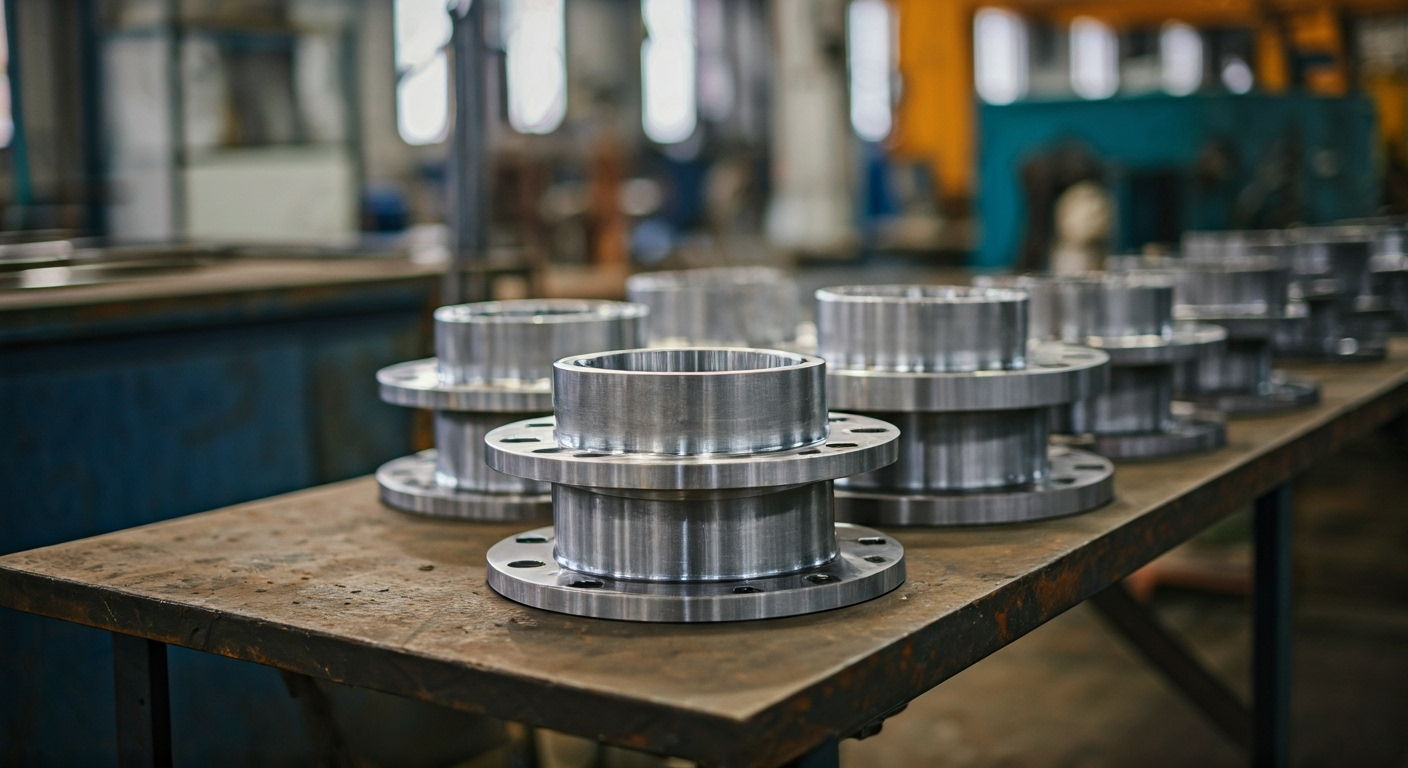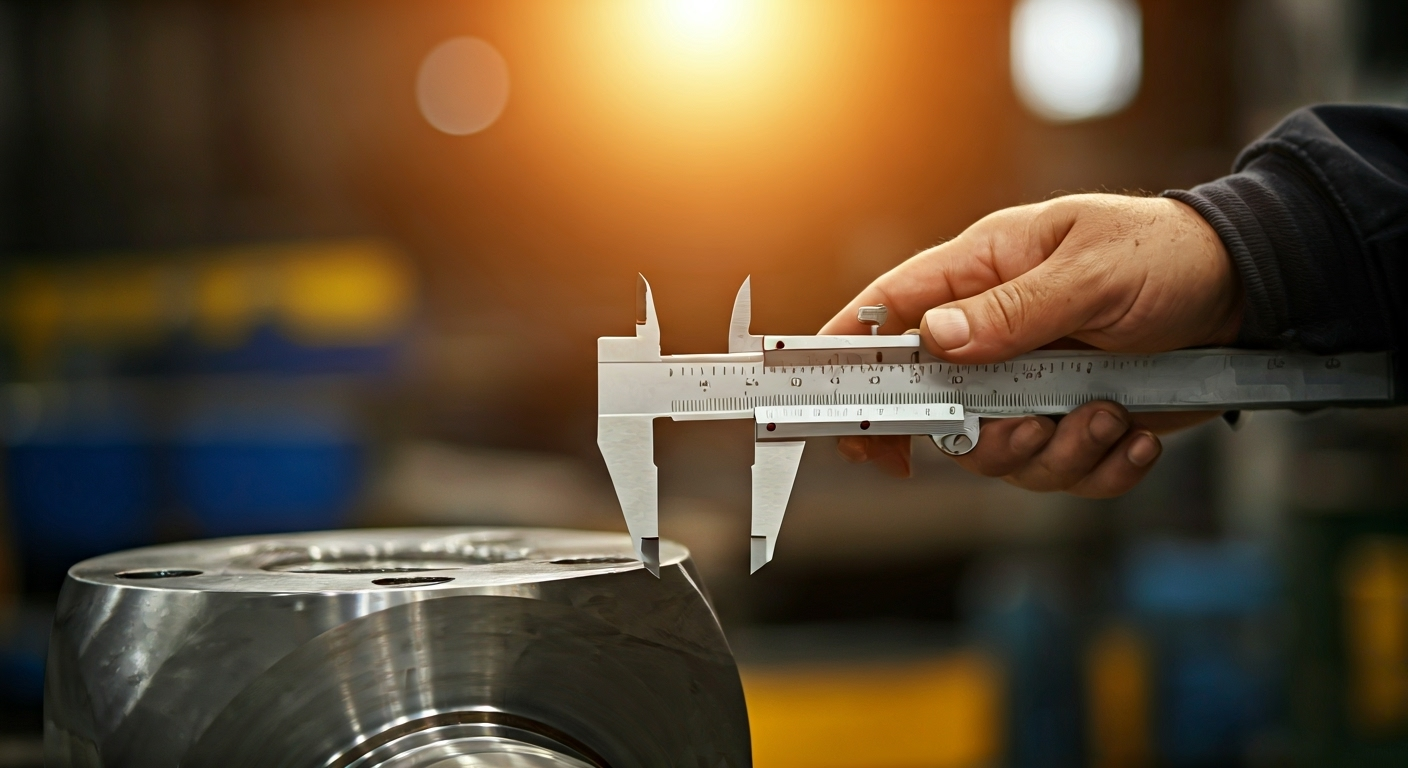-
Yinzhuang Industrial zone,Mengcun county,Cangzhou city,Hebei province,China

Flange Specifications: What You Need to Know

Key Highlights
- Flanges are crucial components for safe piping systems in Chilean industries, ensuring efficient connections between pipes and fittings.
- Key distinctions between common types such as slip-on, weld neck, and blind flanges, emphasizing their applications.
- Detailed understanding of pressure ratings, materials like carbon steel and stainless steel, and sizing standards such as ANSI and DIN.
- Exploration of surface finishes, facing types like RF and RTJ, and advanced manufacturing processes such as forging.
- Handy tables outlining flange sizes, materials, and pricing details for informed decision-making.
- Answers to common questions about flange selection, types, and compliance with standards.
Introduction
Flanges are key parts in piping systems. They help to connect things like pipes, valves, and fittings. These parts are needed to keep the system safe and working well. The right flange specs, like its materials, pressure ratings, and size, are very important for all kinds of workspaces. Picking the best flanges helps the system last longer and keeps it strong. These choices also make sure everything runs right and stays safe. Flanges play a big role in adding to the durability and performance of the overall piping system.
Understanding Flanges and Their Importance in Piping Systems

Flanges are key parts used in pipelines. They help you put pipes together and take them apart easily. This makes it simple to do work on the system and keep everything running well. You will often see flanges used with pipes, valves, and other parts in places that have lots of pipes, like process plants.
The main reason people use flanges is because they last a long time and work in many situations. Flanges help keep pipelines safe by stopping leaks and making sure everything works without a break. When safety and working well are important, flanges are a must. They make piping systems strong and easy to change if needed. Flanges add to the durability of pipelines, helping people do their jobs better.
Common Types of Flanges Used in Chilean Industries
In Chilean industries, weld neck flanges are chosen because they have a tapered hub. This shape gives the flange good strength and helps keep it from bending. These flanges are the best to use when there is high pressure. They fit well with pipelines and help give the most trust for the system.
Slip-on flanges are liked because they are easy to set up. People use them a lot with low pressure, when quick and easy pipe set up is needed. These flanges save money and are the first pick when what you care about is how simple and cheap it is.
Blind flanges are used as a strong cap to close the end of pipelines. These are great if you want to seal a pipe’s end in water treatment or if you need to close off part of a process plant. There are ANSI-standard flanges used a lot in Chile. They fit many pipelines because of their size and there is no trouble to use them with other systems. ANSI gives wide use and flexibility for many jobs in Chilean industries.
Key Functions and Applications of Flanges
Flanges be important parts in piping systems. They help pipes stay strong and flexible in many industrial settings. Their main uses are:
- Making strong pipe-to-valve connections that help everything work well.
- Creating easy access points, so people can check and fix things faster.
- Giving a good seal at the end of pipelines, stopping leaks.
- Helping different parts work together in water treatment and process plants.
Flanges help move chemicals safely. They also be useful in water treatment and water management. Flanges work well in many different situations. Because of this, industries that deal with fluids use them often. Their flexibility makes them a top choice when it comes to pipes and valves.
Essential Flange Specifications Explained

The right flange specifications are very important for safety, how well things work, and making sure parts of piping systems fit together. When you pick flanges, you need to look at the pressure ratings, the size, and if the material is right for the job. Many people use stainless steel or carbon steel because they are strong and can fight off rust and damage.
When industries use the right specifications, they get better performance and save money. There are different class ranges for the flanges, and these match up with certain needs for different jobs. This detail helps people meet their work needs in the best way. Knowing these things helps us to learn more about what makes flanges right for each use.
Materials, Pressure Ratings, and Sizing Standards
Flanges play a key role in piping systems. They are often made from stainless steel or carbon steel grade. Stainless steel helps stop rust and keeps the flange looking and working well for a long time. Carbon steel gives good durability. It can handle hard work and last under tough use.
The pressure ratings for flanges, such as class range (like Class 150 or 300 lb) or PN (nominal pressure), show the highest pressure the flange can take. This helps engineers pick flanges that match what the system needs.
Sizing standards matter a lot too. They help make sure parts will fit with each other. ANSI, DIN, and ASME standards are common in piping systems in Chile and across the world. They let the pipelines, no matter where they are made, work together without problems. Following these standards brings good teamwork and better work on every project.
Surface Finishes and Facing Types
Surface finishes and facing types are key to a good seal in flanges. Raised Face (RF) and Ring Type Joint (RTJ) are two main styles.
- RF has a smooth surface that works in many ways and in most uses.
- RTJ is made to handle high-pressure places, with metal-to-metal contact.
- The right surface finish helps the gasket work better, which means tighter seals.
- The choice between RF and RTJ will depend on how much pressure there is and what flows in the pipe.
These details affect how long and how well your flange connections work. With a good choice, you will see steady results, even when factory or plant conditions change.
Key Features of Slip-On Flanges:
Slip-on flanges are a good option for pipe fittings in many situations. They have a simple shape that lets the flange slide right over the end of a pipe. You can then weld at the bottom of the flange, making the connection strong. Most of these flanges are made from carbon steel or stainless steel, which gives them a lot of durability. They also do not cost too much. Because they fit with many pressure ratings and ASTM standards, you will often see them used in pipelines and process plants. They are a popular choice for water treatment projects and other uses because they last long and are easy to work with.
Our Supply Range:
A wide range of flanges is ready for various needs in different industries. You will find blind flanges, slip-on flanges, and weld neck flanges available in both stainless steel and carbon steel grade materials. All of these flanges are made to follow strict industry rules like ASME, ASTM, and DIN. You can also get special choices such as ring joint and tapered hub flanges, which come in many common outer diameters.
When you pick from our supply, you can be sure about their durability. The flanges have strong pressure ratings, which is important for pipelines and plant work. This helps to make sure everything runs well and lasts a long time.
Types of Slip On Flange Welding
Slip-on flange welding helps make pipelines leak-proof. When people use these flanges, they often do two types of welding. The two common types are internal fillet weld and external fillet weld. These ways of welding help the joint get stronger and hold up better.
Plus, slip-on welding flange designs can be different to meet special pressure needs. For example, there is a raised face type and a ring joint type. These flanges work well in pipelines and for fittings where you need something that can change and adapt. Once you learn about the types, looking at the different faces on these fittings will help you know even more about how to make flange connections tight and safe.
Raised Face Slip On Flange
The Raised Face Slip On Flange is made to seal well, even when the pressure changes. It has an elevated surface that holds gaskets in place. This helps make strong connections, which is good for moderate or high-pressure jobs.
Many industries use this design because it works with both liquid and gas. It manages these mediums without losing how well it works. This flange is also compatible with low-pressure systems. So, this makes it useful for many areas, including petrochemicals and water treatment.
When choosing materials, the rf slip-on flanges let you match what you need with the cost. This helps balance your application needs and budget.
RTJ Slip on Flange
RTJ Slip On Flanges help fix sealing problems in pipelines that handle high pressure. These flanges have carefully made grooves that let the metal fit tightly with the pipeline. This gives a strong seal each time.
You will find these RTJ flanges in many jobs for oil and gas that need everything to run without leaks, even when things get tough. People also use them in places like petrochemicals and other factories, as they work well in many ways.
If you are an engineer and you want to be sure of using something safe and solid, RTJ slip-on flanges give you that extra peace of mind. They help keep systems running right and make sure that safety rules are met in pipelines.
Referred Standard and Grades
Flange specifications follow worldwide rules like ASME, DIN, ASTM, and ANSI. These help make sure that the materials, the size, and what each flange can do all meet high standards.
Grades such as ASTM A105 and ASTM A182 help flanges work well in many places. They have strength and can handle changes in temperature. These standards help connect what people need to do with how to keep everything safe.
When you understand these grades, industries can make good and solid connections, even when it gets tough. This shows their important role in keeping everything running smooth.
Dimensions and Pressure Ratings
Sizing dimensions and pressure ratings are important when you pick a flange. Most of the time, the outer diameters go from 1/2” to 24” for standard ones. You can even get up to 60” if you need a special size.
There are pressure ratings like Class 150, 300 lb, and PN that help make sure it works for your system. When these numbers match your needs, the setup will be safer and last longer. Good sizing and the right pressure ratings make the piping strong and help it work well for a long time.
Manufacturing Types
Making flanges needs a few steps. The steps are forging, welding, and heat treatment. Each step has its own good points. Forged types are well-known for strong, tight grain. This gives them better strength and helps them handle stress well.
Casting makes shapes that are more detailed. But these can wear out more in places with a lot of pressure. Heat treatment improves how well flanges work. It helps them stand up to tough work every day.
Picking the right way to make a flange helps it stay strong and connected for a long time at work.
Advantages of Slip On Flange
Slip-on flanges give you a lot of good things:
- Their easy fit helps save time when you set them up.
- They also cost less to make than some other kinds of flanges.
- You can use them with many pipe sizes and materials.
- People can rely on them to work well in low or middle pressure systems.
All these benefits make slip-on flanges a great choice for piping projects. If you need to keep costs down and need your tools to fit different jobs, these can help a lot.
Slip On Flange vs Weld Neck Flange
Slip-on flanges and weld neck flanges are made to meet different needs in pipelines. Weld neck flanges have a long, shaped hub that helps to spread out pressure. This makes them good for places where there is a lot of pressure in the pipelines.
Slip-on flanges are best for areas that do not have much pressure. They are easier to put on but need more welding than weld neck flanges. To pick the one that is right for you, think about how much pressure is in the system and what is most important for the job.
SPECIFICATIONS
Reviewing the details for slip-on and weld neck flanges comes down to a few important things:
- Pressure ratings need to fit their class ranges.
- Outer and inner diameters must be right so they fit the system well.
- Bottom flange type and facing have to match what the media needs.
- These must meet ansi, asme, and din standards when being used around the world.
Paying close attention to the above makes sure that pipeline connections stay strong and keep working well, even with the hard work in all kinds of industry.
Advantages of Using Blind Flanges
Blind flanges give some clear advantages:
- They close off pipelines, so you can do maintenance work safely.
- You can use them to make pressure tests quick and simple in many places.
- They let you change pipelines later without much trouble.
- They help lower the chance of leaks when working in busy factory settings.
These blind flanges help pipelines to work better because they last a long time. You can also make changes to fit your needs easily.
Applications of Blind Flanges
Blind flanges are used in many different areas. These include:
- Repair tasks in water treatment places.
- Closing off sections of pipelines that are not in use.
- Testing how much pressure new setups can take.
- Working with different fittings to fit special project needs.
People use blind flanges because they can be changed for most jobs that come up. This makes them a good choice for many uses in pipelines, water treatment, and fittings.
Let me know if you want me to add more sections!
Price List of Blind Flanges
A full price list for blind flanges can change based on a few things. The size, type of material, and how much pressure them can take all impact the final price. You will find common outer diameters made of stainless steel, carbon steel, and nickel alloys. The class range tells you about the durability and what the flange be used for, like in a process plant or a water treatment spot. If you want exact prices, you should talk to suppliers. Some jobs need things like heat treatment or special forging, and this can add to the cost. The prices also go up or down because the market changes over time.
BL FLANGE DIMENSIONS
For blind flanges, having the right size is very important. This helps the flanges work well with pipelines and get the right pressure ratings. Usually, the inside part of the flange has to match up with the end of a pipe. The outside part should also fit many class ranges like ASME, ANSI, or DIN. The thickness of the flange can be different because of what it is made from. It could be carbon steel, stainless steel, or nickel. All these things help make the blind flanges strong, last longer, and work well in many types of industrial jobs.
Conclusion
To sum up, it is important to know about the different specifications and types of flanges if you work with pipelines or take care of process plants. Flanges are flexible and can fit well with many fittings, and slip-on flanges be a popular choice because they are easy to use. Flanges made from carbon steel or stainless steel can last a long time and handle tough jobs. If you look at pressure ratings, size, and how well they fit, you can pick the right flange for the work. This helps the whole system work well and be dependable over time.
Frequently Asked Questions
What are the main standards for flanges used in Chile?
The main standards for flanges in Chile are ANSI, ASME, and ISO. These standards make sure that the flanges can be used for different jobs. When you follow these rules, you know that the flanges are safe and can be trusted in places like oil, gas, and building work. This helps people in many fields get good results with their work.
How do I select the correct flange material for my application?
Choosing the right flange material means you need to think about a few things. Look at the temperature and pressure where it will be used. Find out what is being transported, as this matters too. You should also check if it matches with the other piping materials you have. It is a good idea to look at how well the material stands up to rust. This can help give more durability and make it work well for your needs.
What is the difference between raised face and ring type joint flanges?
Raised face flanges have a part that sticks out, which helps them seal better when there is pressure. Ring type joint flanges use a metal ring to make a tight seal. The right choice for the job will depend on what you need and the pressure ratings. This helps make sure things work well.
Can I use a metric flange with imperial piping systems?
Using a metric flange with an imperial piping system can cause problems. The two may not fit together well. This may lead to leaks or weak points. It is important to look at the size and pressure ratings before you use them together. Sometimes, you will need adapters to get a good fit and make sure the system works right.
How are flange dimensions measured and specified?
Flange dimensions are usually checked by looking at the pipe size, the outside width, and how thick it is. You also need to know the size of the bolt holes, how far apart they are, and what kind of face the flange has. Getting these measurements right helps the parts fit together well. This is important for the way the piping system works and for keeping it safe.
What is a flange and what are its primary uses in engineering?
A flange is a mechanical component that connects pipes, valves, and equipment in engineering applications. Its primary uses include providing support, enabling easy assembly and disassembly of systems, and ensuring leak-proof connections. Flanges come in various shapes and sizes, tailored to specific industry requirements for strength and durability.


